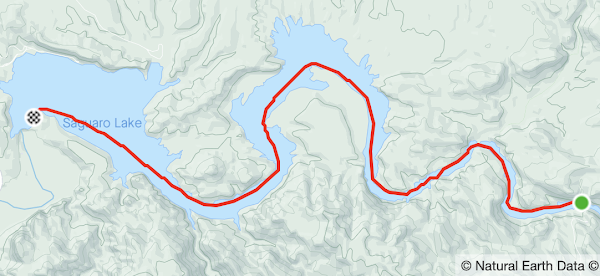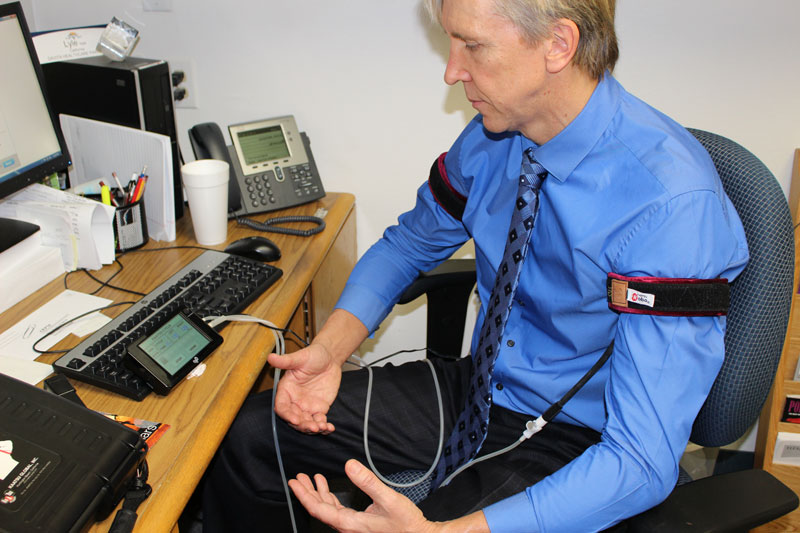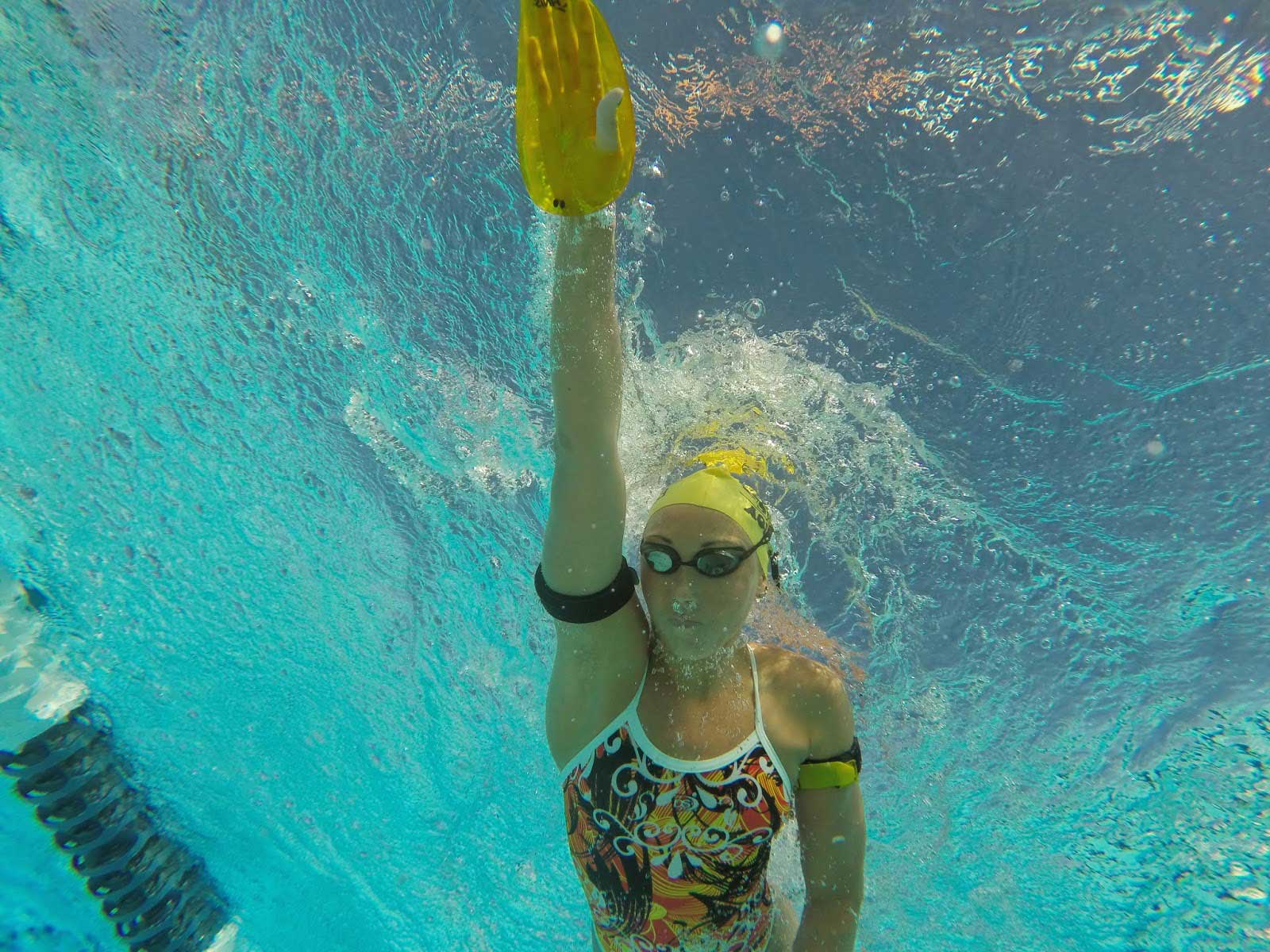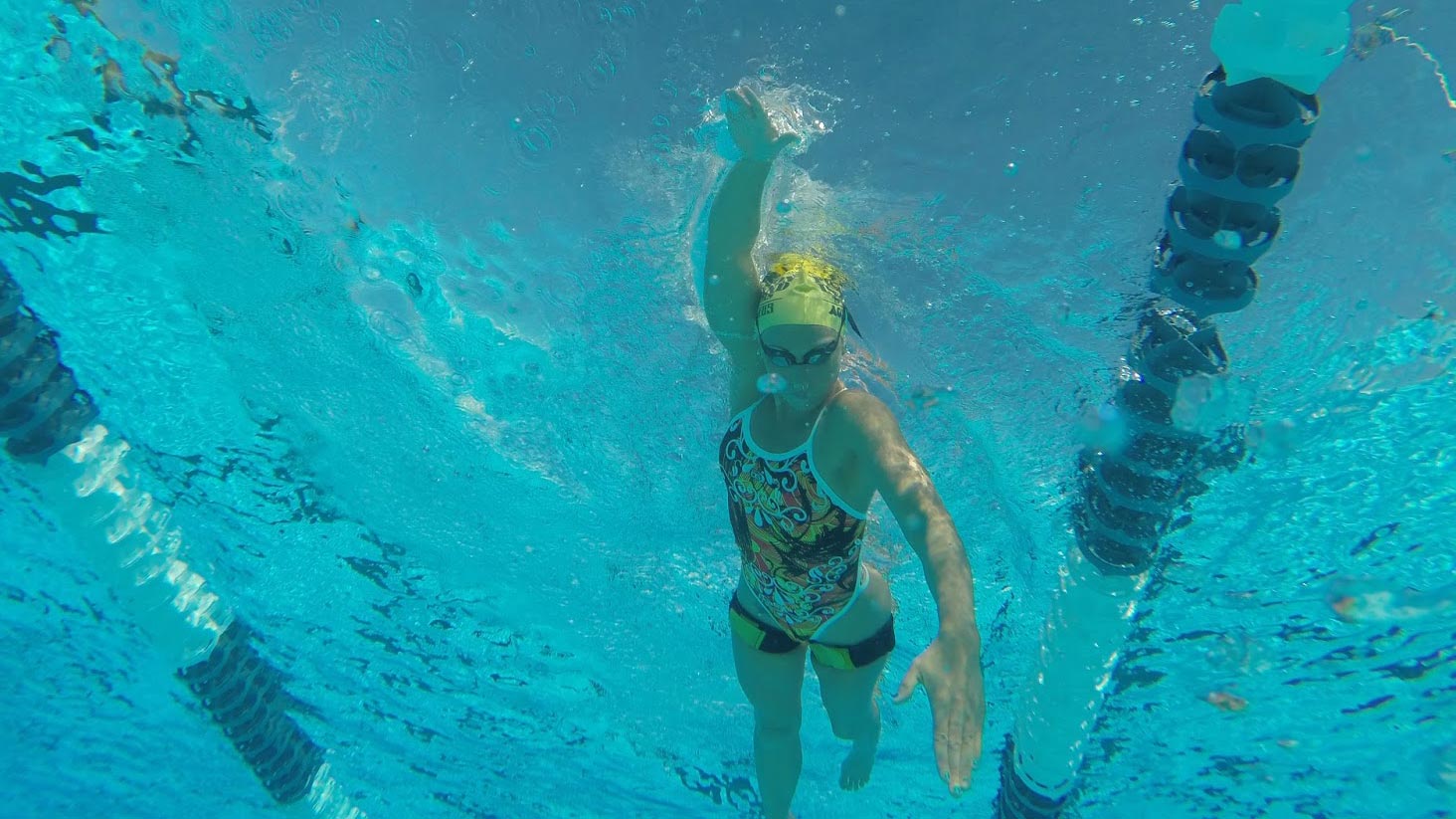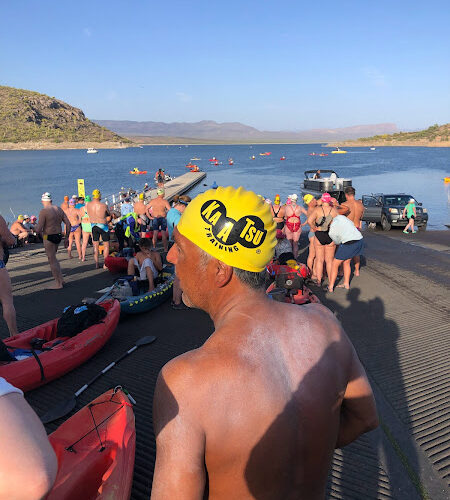
Taking KAATSU To The Extreme
How can KAATSU be used by extreme sports athletes?
Three ways: for improvement of athletic performance, for recovery, and for rehabilitation. We explain below:
Background:
Extreme sports includes ultramarathon events (e.g., Western States 100-Mile Endurance Run, Marathon des Sables, and Barkley Marathons), cycling (Tour de France and Race Across America), skiing (Arctic Circle Race), dog sledding (Iditarod), and triathlons (Norseman Triathlon and Hawaii Ironman).
Extreme athletes love testing, pushing, and extending their physiological and psychological limits of what is possible. The events are logistically unique that are largely conducted under extreme conditions that challenge the athletes over long periods of time.
The events are held in lava fields, deserts, mountains, roadways, and fjords. When judging the difficulty of the extreme events, athletes have different opinions and perspectives. For example, Alex Honnold, the renowned mountain climber of Free Solo fame, says “I think open water swimming sounds fucking heinous! And in some ways dangerous, because you could frickin’ drown.”
Stephanie “Steph” Davis, a famed American rock climber, BASE jumper, and wingsuit flyer, echoed Honnold’s opinion about extreme sports in the water, “I would not be enthusiastic if I had to do open water swimming, because I’m not a very big fan of the ocean. If I had to do one of these sports tomorrow, I would probably be most upset about swimming.”
While skiing, running, cycling, and mountaineering have been around for many decades, extreme swimming events are gradually becoming increasingly popular. Swimming for long distances in rough water is attracting the same sort of personalities as do extreme sports cousins on dryland: tough, hardened, focused and committed people who love adventure and do not fear failure.
Open Water Swimming:
Among the longest and toughest swims, races include 8 Bridges in New York, the Maratón Acuática Internacional Santa Fe – Coronda in Argentina, Traversée internationale du lac St-Jean in Canada, and the SCAR Swim in Arizona.
SCAR Swim:
The SCAR Swim is a 4-day stage swim across 4 lakes in the Sonoran Desert. Touted as a 66 km in distance, the swim is twice as far as the English Channel (33.5 km), the Catalina Channel (32.3 km), and any of the channels of the Oceans Seven.
Distance is not the only challenge inherent in the SCAR Swim. Swimmers also face swimming rattlesnakes, cold water (between 12-14°C or 52-56°F at the start), countercurrents (when the water is released into or from the dams, the swimmers have to swim against back siphonage and the oncoming water flows), and heavy surface chop when the winds come up in the desert and blow through the narrow canyon walls of the reservoirs. Then, there is getting from the swims on the next subsequent days. Swimmers are constantly on the move, either preparing for, competing in, recovering from, or moving to the next swim. It is quite a logistical adventure where every day and every swim brings new conditions and challenges on a new course.
The swimmers entered in the 2022 SCAR Swim included experienced channel swimmers, noted marathon swimmers, swimmers who have pioneered numerous swims in different venues around the world, and Ice Milers (i.e., people who have swum at least 1 mile in water that is colder than 5°C). Aquatic street cred must be demonstrated before entry into the SCAR Swim is accepted.
Envisioned by Kent Nicholas in 2012, SCAR is an acronym that stands for Saguaro Lake, Canyon Lake, Apache Lake, and Roosevelt Lake. Nicholas created the event to prepare for his own Triple Crown of Open Water Swimming attempt. This Triple Crown requires swimmers to complete the 20 Bridges swim around Manhattan Island in New York City, a solo crossing of the English Channel between England and France, and a solo crossing of the Catalina Channel in Southern California.
Utilization of KAATSU for SCAR
59-year-old Steven Munatones wanted to optimally utilize KAATSU in his preparations for the 2022 SCAR Swim. He explains below how he used KAATSU for athletic performance, recovery, and rehabilitation.
Athletic Performance – Dryland Training
“I had not competed in an athletic contest you have since 1994, over 22 years ago. Although I was not too overweight or weak from a sedentary lifestyle, I had a long way to go to be able to complete – let along compete in – the SCAR Swim.
So for athletic performance, I used KAATSU as a means to gain strength and stamina. I did at least an hour of KAATSU Cycle sets while I was working at my desk, writing emails, and on conference calls. I used KAATSU about 80% of the time on my arms, and the remaining 20% of the time on my legs. Doing KAATSU Cycle sets repeatedly using Low, Medium, and then High SKU Pressures. I was always starting on Low Pressure and always ending on High Pressure.“
“I walked every day, an average of 10,086 steps, in addition to the swimming that I did in the pool or in the Pacific Ocean. I did a small percentage of these walks with my KAATSU Air Bands on, either on my arms or legs. I never walked fast or jogged. It was always a casual walk, but if I walk with the bands on my arms, I do repeated tricep extensions.
I stretched, but I did not do any resistance training, weight training, pull-ups, push-ups, sit-ups, or any kind of HIIT Training other than aerobic sets in the pool where I usually hit 185-190 heart beats per minute when I was swimming fast.
The goal of repeatedly doing the KAATSU Cycle sets is to increase the elasticity of the vascular tissue throughout my body. It definitely worked because I was gradually able improve the pace and increase the distance of my swimming in the water.”
Athletic Performance – Pool Training
“I had to prepare my body to swim non-stop over 60 km in 6 months. I started out slowly, even though I wanted to be competitive in the race. But simply finishing was my real goal. So I gradually – very gradually – built up from 2,000 yards per day to a maximum of 14,400 meters in one pool workout. Day by day, I slightly increased my time in the water while trying to swim faster. I increased everything very gradually – while religiously doing KAATSU Cycles daily – so I would not experience any overuse injuries.
My ultimate goal – although I did not know it was attainable in the beginning – was to increase my sustained pace to the same pace that Penny Dean – the Catalina Channel and English Channel record holder – did when she was at her peak, or swimming for 7 hours at a 1:20 pace per 100 meters. I was able to do that towards the end of my 6-month training period, but only up to 3 hours at a time. That was OK with me.
By increasing the elasticity of the vascular tissue – especially the microcapillaries throughout the body with KAATSU – I was able to deliver oxygen-rich blood to my working muscles and remove metabolic waste very efficiently. This was not a quick process – it took 6 months of focused training where I saw my sustained pace drop from 1:30+ per 100 meters to a peak of 1:18 per 100 meters towards the end.”
Athletic Performance – Ocean Training
“In the ocean, I swam throughout the winter from November right through April when SCAR was held. I swam every day except for days in which the ocean was too dirty due to urban runoff or population (swimming 28-29 days per month). I swam mostly in Huntington Beach, but I also swam in other beaches throughout Southern California including Laguna Beach, Newport Beach, Corona del Mar, Cabrillo Beach, and Zuma Beach. I made sure to swim either through or right outside the surf zone because I wanted to swim in as rough water as possible.
Some days, the waves had 2+ meter faces and it took me over 12 minutes swimming straight out from shore to get through the waves. Other days, I would swim in place or even backwards when there were strong coastal currents going against me. I never shied away from the waves or rough water because I knew it would help me on the windy SCAR lakes. But the stress on my shoulders was significant so the KAATSU Cycle recovery sets after I got out of the water helped me prepare for the next workout.”
Athletic Performance – Cold Water Acclimatization
“Unlike swimmers from Ireland, Switzerland, Boston, and San Francisco, the water temperature remained bearable during the Southern Californian winter, ranging from a low of 54°F (13°C) in Cabrillo Beach to a high of 59°F (15°C) in Huntington Beach. For me, this was not easy. It took some acclimatization to deal with the cool water, especially when the wind was blowing or there was a layer of marine fog. The cold really zapped me. I was most fatigued in the cold. I would take a warm shower, put on warm clothes, do one short KAATSU Cycle set, and then take a nap. I needed the shower-KAATSU-nap to recover.”
Athletic Performance – Hydration
“One of the crazier acclimatization training methods that I did was to purposefully train dehydrated. Even in my long workouts over 3 hours, I would not stop to hydrate or eat. I would just pound out the mileage. In the beginning, I would get cramps in my calves and feet, but I learned to deal with the discomfort. I wanted to experience this kind of discomfort in training, so it would not be problematic in the actual SCAR Swim.
But if I did not do KAATSU Cycle sets after these workouts, which I tried once, I would feel that soreness from the cramps all day long. It was not debilitating, but it was definitely discomfortable all day. So I only did that experiment once. So even if I had a cramp during the dehydrated sessions, I knew the residual effects of the cramp would go away with KAATSU Cycle sets once I was finished and doing it on dryland.”
However, before these long walks and ocean swims, I did hydrate with Quinton Hypertonic water (Quinton Isotonic® Marine Plasma), a raw marine solution (pure seawater) that was created by René Quinton in 1887. The seawater is sourced from the depths of protected, plankton-rich ocean blooms off the coast of France and cold-sterilized to retain its healing properties – and eliminated the cramps that would normally come with training intensely in a dehydrated state.
Athletic Performance – Feeding
“KAATSU had nothing to do with this acclimatization training method, but I did purposefully eat unusually and heavy foods before a handful of workouts. Sweet potato pies, sausages, bacon, potato chips, oranges, a glass of milk, and all kinds of different combinations of food that I would definitely not eat before any race or workout. But I wanted to upset my stomach and learn how to deal with stomach pain. Fortunately, I was able to handle any kind of food and swim normally. So that experiment worked, I guess.
During the actual SCAR Swim, I only bonked once, but I think that was because my kayaker and I had a fast food dinner at a local Circle K gas station between Day Two and Day Three – and no breakfast before the swim on Day Three. Getting from Canyon Lake on Day Two to Apache Lake on Day Three took a long time, including an hour-long drive on a dirt road, in parts of the country where there are few eating options, so we learned our lesson. Four hours into the Day Three swim, I just ran out of gas – I had nothing left in my tank. I had to do 30 strokes of breaststroke to regain my thoughts and my kayaker Chris gave me 4 Starburst candies and my go-to peanut butter-and-Nutella sandwich. After slowing down for 10 minutes, I regained my thoughts and pace – and the swim went back to normal.
Lesson learned: no pre-race dinners of gas station fast food.”
Rehabilitation – KAATSU Prevention
“I had no time for overuse injuries. I had to stay injury free because I only had 6 months to prepare. So I did 20-30 minutes of KAATSU Cycle sets before each swimming session. This prepared my vascular tissue in both my arms and legs – and core – to undergo sustained efforts that ranged between 90 minutes to over 3 hours of constant swimming.
Fortunately, I got stronger, more lean, lost weight, and even though I was fatigued after the workouts, I never got injured.”
Recovery
“It was specifically after the workouts where KAATSU Cycle sets really proved their value. My shoulders, triceps, lats, and quadriceps were toast after each workout. I tried to push myself to the limit every day in the water. I had to get rid of the metabolic waste that my body generated – as soon as possible after each workout.
I would do 20-30 minutes of KAATSU Cycle sets on my arms right after a workout and another 30 minute session sometime later in the early to late evening. These would all be done on my arms. I would throw in an extra 20-minute leg session if I felt especially fatigued. Chris would do the same with his KAATSU C3 unit. As much as I swam, Chris kayaked and more against oncoming winds that made it very hard for him and all the other escort kayakers.
I almost exclusively performed KAATSU Cycle sets while sitting in the office, writing emails, or on Zoom meetings or conference calls. I didn’t take time to go to a gym or stop what I was normally doing in the course of my workday. In other words, KAATSU was totally integrated into my daily activities. It would sit next to my laptop on my desk or be in my pocket.”
Sleep Deprivation & Hardship
“Sleep is always a key feature of a healthy lifestyle and is vitally important for athletes who are training hard. But I did a few days where I purposefully deprived myself of good sleep, getting only a few hours or sleep or sleeping on a hardwood floor – and then going to do a hard workout. It was another unusual means for me to get prepared for anything at SCAR. On those days where I woke up from a deep sleep only a few hours after going to bed, or the days where I slept in my clothes on a hardwood floor, it was tough to swim fast. But I wanted my body to perform under suboptimal conditions. I do not recommend this for others, but for me, it was necessary – because I did not know what to expect at SCAR and I had been so far removed from overall physical discomfort over the last three decades. Those workouts in a sleep-deprived state reminded me of what I could face.”
Nutrition
“I eat mostly a diet of Japanese and Mexican food, influenced by my wife and mother respectively. I don’t take vitamins or eat any special ketogenic, vegan or specialty diet, but there are two supplements that I take.”
- ENERGYbits which are organically grown, high-protein, nutrient-dense spirulina algae tablets.
- Quinton hypertonic seawater that comes in glass vials that has all the minerals that are necessary.
“I had heard that gourmet meals and nice restaurants were not abundant – or even available during the SCAR Swim so I wanted to make sure that I was able to supplement my diet with all the vitamins and minerals that is usually has and had to be replaced during and after these long swims. The ENERGYbits tablets and Quinton vials were the perfect solution: I ate a algae tablet packet and a single seawater vial both in the morning and evening. It worked.”
Day One – Saguaro Lake
“I finished the dam-to-dam crossing of Saguaro Lake in 3 hours 14 minutes 3.6 seconds. I did not know what to expect, except cold water at the start. It was cold for sure, but the water temperature warmed up after a few kilometers and stayed suitably not-cold for the duration of the swim. I enjoyed the scenery and got motivated each time I was able to swim next to another swimmer. I averaged 154 beats per minute over the entire course with a max of 181 bpm.
As soon as I finished the swim and climbed in the official’s boat, I started doing KAATSU Cycle sets on my arms. I continued doing KAATSU Cycle sets until I felt almost fully recovered which took about 30 minutes. I was ready for Day Two by dinner.“
International Marathon Swimming Hall of Fame Honor Swimmer David Barra of New York said of Saguaro,
“The banks of the river/lake are lined with sage and saguaro cacti that alternate between open areas and tall canyon walls rising straight out of the water. The rugged beauty of this lake is breathtaking, and I was, at times, distracted… wanting to focus my attention on one feature or another.”
Day Two – Canyon Lake
“I finished the dam-to-dam crossing of Canyon Lake in 3 hours 44 minutes 26.2 seconds. This was a very tough swim. We had to go all-out in the first 500 meters because of a very strong countercurrent. Right from the start, I was sprinting for a while, but then I settled down and wanted to conserve my energe for the longest lake tomorrow. I averaged 90 beats per minute over the entire course with a max of 186 bpm at the end.”
As soon as I finished the swim, I started doing KAATSU Cycle sets on my arms. I continued doing KAATSU Cycle sets for over 30 minutes in the car on the way back to the hotel. I did a few sets on my legs, but I felt fully recovered and ready for Day Three.
SCAR veteran Janet Harris of New York said of Canyon,
“Canyon Lake lived up to its name – the walls rose up dramatically on both sides of the lake all along the twisty route from dam to dam. We even saw a big-horn sheep along the way.”
Day Three – Apache Lake
“I finished the dam-to-dam crossing of Apache Lake in 6 hours 30 minutes 34.5 seconds. Not only were the logistics of this swim challenging and ranged from our pontoon boat stalling twice – to a dead stop – to an hour-long drive along a bumpy 11-mile dirt road to the start, but I also didn’t think I could finish when we jumped in the cold water at the start. It was simply too much – too cold. But I calmed my breathing and stayed focused – for the next several hours. I averaged 135 beats per minute over the entire course with a max of 164 bpm in the middle of the course.”
As soon as I finished the swim, I started doing KAATSU Cycle sets on my arms in the official’s boat. I continued doing 6-8 KAATSU Cycle sets for over 30 minutes in the hotel. I didn’t do any sets on my legs because I felt ready for Day Four by the time I feel asleep.
Seven-time English Channel swimmer Sally Minty-Gravett, MBE of the Isle of Jersey said of Apache,
“The toughest swim I have EVER done.”
Day Four – Roosevelt Lake
“I finished the dam-to-dam crossing of Roosevelt Lake in 2 hours 39 minutes 25.7 seconds. This was a night swim – and it was pitch black when we finished. We used a green light so Chris could keep track of me after night feel and Chris had a head lamp on with glow sticks on his kayak so I could follow him in the darkness.
The lake was so tranquil and the temperature of the water was so comfortable – finally. I averaged 139 beats per minute over the entire course with a max of 162 bpm in the middle of the course.
As soon as I finished the swim, we packed up and had to catch an early morning flight back to LAX for the 4-day Milken Global Conference where [escort kayaker] Chris [Morgan] and I would stand on our feet all day, demonstrating and explaining KAATSU. So I went to bed right away and woke up a few hours later and did repeated KAATSU Cycle sets in the car to the airport more than an hour away. By the time, we got to the airport in Phoenix, I felt recovered enough to participate in the Conference.”
I have to account for a successful four days in Arizona – and the subsequent four days at a busy conference – with my daily use of KAATSU. I was stronger as a result, I recovered faster, and I was able to avoid any overuse injuries despite a pretty intense physical preparation for one of the world’s toughest extreme sporting events.
SCAR veteran Patrick Brundage from Arizona said of Roosevelt,
“I could swing my eyes upward a bit and see the brilliant starry sky that we never get to see in light-polluted Phoenix. It was gorgeous. Add to that the neat effect of my orange glow stick wrist band and one of my pink glow sticks that was on a longer string flopping around and this was the closest I think I’ll ever come to a swimming rave. I didn’t even need club music to get totally lost in the zone of swimming. I was really digging it.”
Cumulative Time Results
1. Steven Munatones 16 hours 8 minutes 30.0 seconds
2. Lura Wilhelm 17 hours 54 minutes 6.2 seconds
3. Jordan Iverson 18 hours 16 minutes 22.5 seconds
4. Van Cornwell 18 hours 21 minutes 55.1 seconds
5. Leslie Hamilton 18 hours 50 minutes 59.4 seconds
6. Stefan Reinke 19 hours 11 minutes 39.8 seconds
7. Martyn Webster 19 hours 29 minutes 34.7 seconds
8. Martha Wood 20 hours 10 minutes 37.1 seconds
9. Sydelle Harrison 20 hours 10 minutes 37.4 seconds
10. Eric Durban 20 hours 37 minutes 36.0 seconds
11. Lars Durban 20 hours 37 minutes 36.0 seconds
12. Neil Hailstone 20 hours 39 minutes 14.4 seconds
13. Sarah Roberts 22 hours 55 minutes 39.5 seconds
14. Jane Mason 25 hours 12 minutes 51.2 seconds
15. Elaine Howley 25 hours 14 minutes 50.9 seconds
Other swimmers included Tracy Knight, Steve Sutton, Wendy Van De Sompele, Lauren Byron, Dana Price, Robin Hipolito, Peter Hayden, James Savage, Jorge Cortina, Andrew Wallace, Lauren Hasselquist, William Dichtel, Carol Bauer, Brian Lanahan, Mark Ochsner, Erin Churchill, Sarah Taft, Finbarr Hedderman, Michelle Squyer, Jessica Wood, Kyle Poland, Courtney Paulk, John Zemaitis, Melodee Liegl, Marnie Whitley, Bryan Crane, Eric Schall, Mark Spratt, Tricia Elmer, Kristiana Fox, Sidney Russell, Michael Reilly, and Susie Paul.
Nicholas described the event after the last swimmer finished,
“[We got] off to a great sunny start with mild headwind halfway into the Saguaro swim. There was some debris in the water at the start, but swimmers and crew navigated without issue. Steven Munatones and Lura Wilhelm leading the pack on Day #1. Day #2 at Canyon was absolutely brutal – being the toughest Canyon swim in SCAR history. Horse Mesa dam was drawing water creating a counter current. Apache was a serious challenge with a medium to high headwind. Day #3 at Apache proved to live up to its reputation. With a relative calm for the first two and half hours, a medium to heavy headwind was substantial [for the rest of the swim]. Day #4 was a new experience with Roosevelt 2.0 being a triangular course on the east side of the lake. Overall, it was a very successful swim series with Steven Munatones and Lura Wilhelm taking home the SCAR buckle.”
For more information on SCAR Swim, visit www.scarswim.com. For complete race results, visit here.
For more information on KAATSU, visit www.kaatsu.com.
Epilogue:
Munatones summed up his final thoughts,
“Ever since I was released from the hospital, I have dreamed of doing something to prove to myself that I am capable of living a normal life. I feel so grateful for all the people who have helped and encouraged me along the way.
Weeks after going into full (ventricular fibrillation) arrest, having an (atypical thrombus) clot, and experiencing myocardial infarction (heart attack) in the left anterior descending (LAD) artery, and being saved by my 17-year-old son doing hands-only CPR, I have been doing KAATSU daily. I know it sounds like a shameful plug for a company that I work for, and this form of cardiac rehabilitation is definitely not for everyone, but I have experienced so many benefits cardiovascularly, metabolically, and muscularly with the daily Progressive KAATSU Cycle sessions that I do (i.e., 30 seconds of pressure, followed by 5 seconds of no pressure) that I would always recommend the same for my family members, if they ever experienced the same widow maker like me.
I was smiling underwater and so happy while swimming in those four lake of SCAR. I have so much to be thankful for. Thank you very much, (race director) Kent.”










